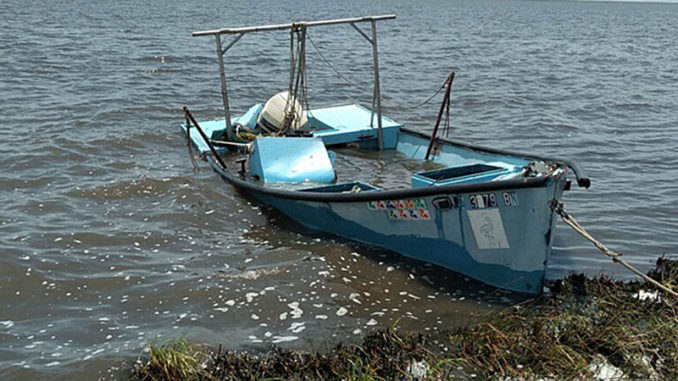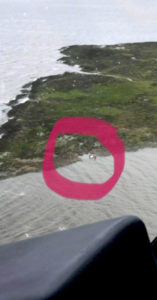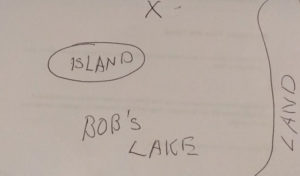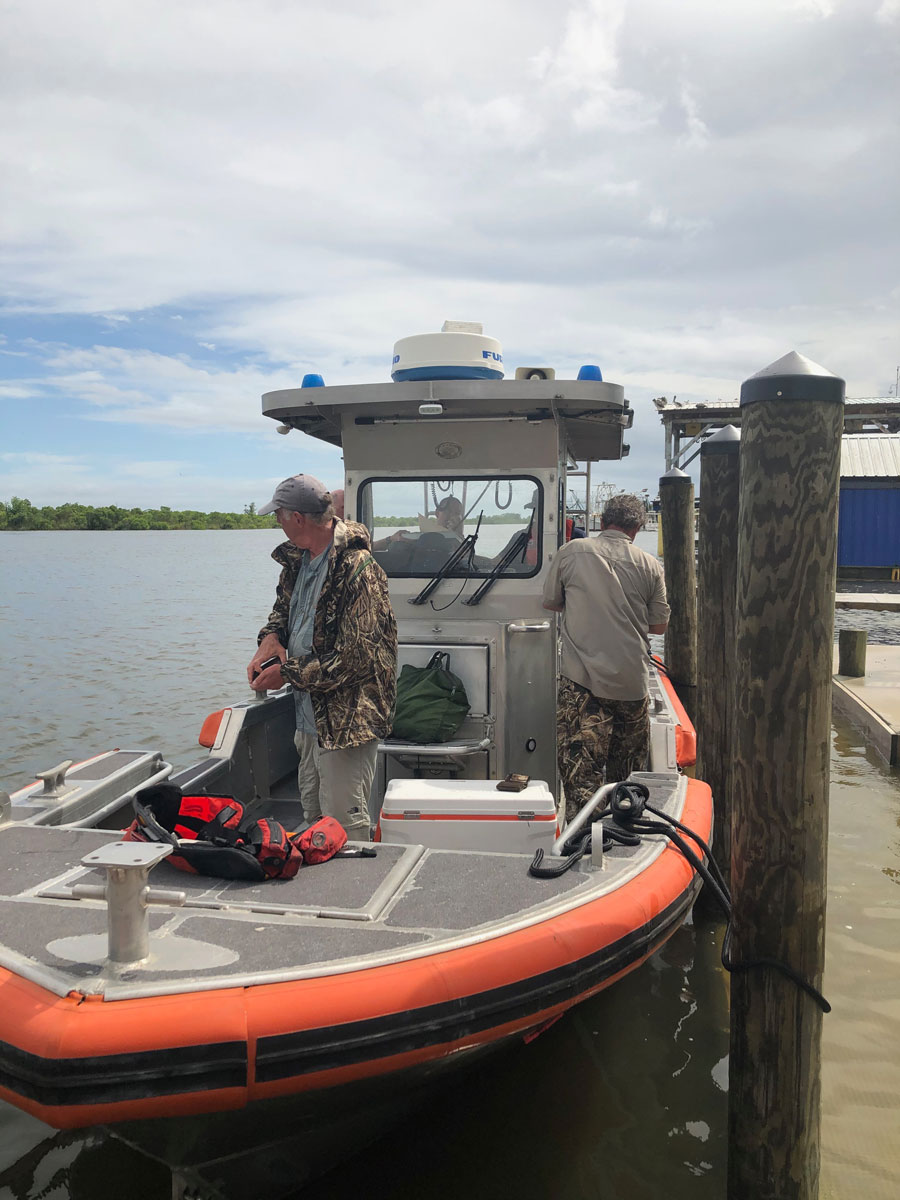
Two shrimpers saved morning after sinking
We have all been there. Everything is going right on the water. You start the motor, but it fails, and that sinking feeling overcomes your stomach.
For Thom Franklin and Joey Tripi, that feeling became a reality when their boat sank on Sunday, May 24.

The two launched Tripi’s 21-foot skiff at about 5:30 p.m. in Hopedale and motored to Bob’s Lake. They planned to shrimp into the night and return around midnight. They made their first drag around 7 p.m., in relatively calm water with no small-craft advisory.
Trouble presented itself later. The wind increased, and the waves grew and crashed over the boat’s stern.
Tripi said that typically, when water enters the boat, it runs out through the scupper holes of the stern’s well, but a tremendous amount of water entered the boat, and the bilge pump could not keep up with the incoming water.
“The motor was still running,” Tripi said. “I never turn the motor off when I shrimp. I tried getting the boat on a plane to help the water run out, but it would bog down.”
According to Franklin, in about 20 seconds, the boat filled with water and sank, with the motor wedging into the lake’s bottom. The skiff’s bow projected slightly above the surface, and they spent the night there.
“When we realized we were going to sink, I told Joey we needed to get life jackets on,” Franklin said. They quickly donned life jackets and huddled in chest-deep water at the bow of the boat.
Utilizing what they had
Both men are experienced sportsmen, and Tripi’s boat was well stocked with survival gear, but when it sank, the lids on the storage compartments opened, and some of those needed goods were lost.
“I had a flare gun, but we lost it,” Tripi said. “I had a signal mirror, too.”
Struggling to keep their composure, they looked over the situation and started gathering what they could. They managed to secure their ice chest and used it to trap anything salvageable. They had water, some small bottles of Coca Cola, one ham sandwich and some Fritos corn chips. Both had their cellular phones; they tried throughout the night to call for help but never were able to obtain service.
Far in the distance, Franklin and Tripi could see the lights of other boats. They utilized the boat’s Q-Beam and flashed an SOS signal that went unanswered. They continued to struggle through the night and said the moon was not visible. The only illumination available was provided by stars and the occasional lit screen of a cell phone.

They focused on not drowning, with the inclination of reassessing their situation at daylight. They knew it was a matter of time before a search, but it would not launch until the next day.
“My wife was out of town in Texas,” said Franklin. “She had no idea what was going on.”
Searching for more supplies
During the night, Tripi made the decision to remove his life jacket to dive underwater to search for more useful goods. Returning to the surface, he could not find it immediately. He spotted it off in the distance, but Franklin warned against going after it.
“I said, ‘Joey, it’s too far, and you’ll never catch up to it,’” Franklin said.
Tripi began to tire later in the rough, rising waters. He decided to push away from his friend and try to take off his rubber boots and pants to minimize the weight he was carrying.
“I was getting tired, and I didn’t want to panic and drown Thom,” Tripi said.
Franklin was not going to let his friend die, and while Tripi removed articles of clothing, Franklin removed his boots and decided they could be fashioned into floats. He trapped air in the boots and gave them to Tripi to put under his arms.
The two men eyed land after sunrise and took note of the wind direction and accessed the tide. They decided to use the Igloo as a float and let the wind deliver them to land. After drifting for more than two miles, they landed on a grassy marsh island. They scoured the island and found two deflated balloons and a red crab basket. They attached it to a long stick to wave as a signal flag.
The search begins
At about 8:30 a.m. on Memorial Day, Franklin’s wife realized something was amiss. Her text messages to her husband had gone unanswered. Her two daughters sprang into action and arrived at his home to find he was not there.
When Franklin’s whereabouts could not be confirmed through the Find My iPhone app, his daughters contacted the U.S. Coast Guard. Shortly thereafter, Franklin and Tripi were located.

“We brought the Q-Beam with us in the ice chest,” said Franklin. “We took it apart and used the reflective part to try and signal for help, but it’s curved, so it really didn’t work all that well.”
Tripi had drawn a crude map of where he and Franklin would be shrimping and left it with his wife. He and Franklin saw the Coast Guard helicopter searching for them in that general area and knew they just had to be patient. When the rescuers took a direct course to the men, they waived their signal flag back and forth.
“Thom was saluting and waving,” Tripi said.
Tripi’s float plan was recognized as the key to a quick rescue and not a long, gloomy recovery mission.